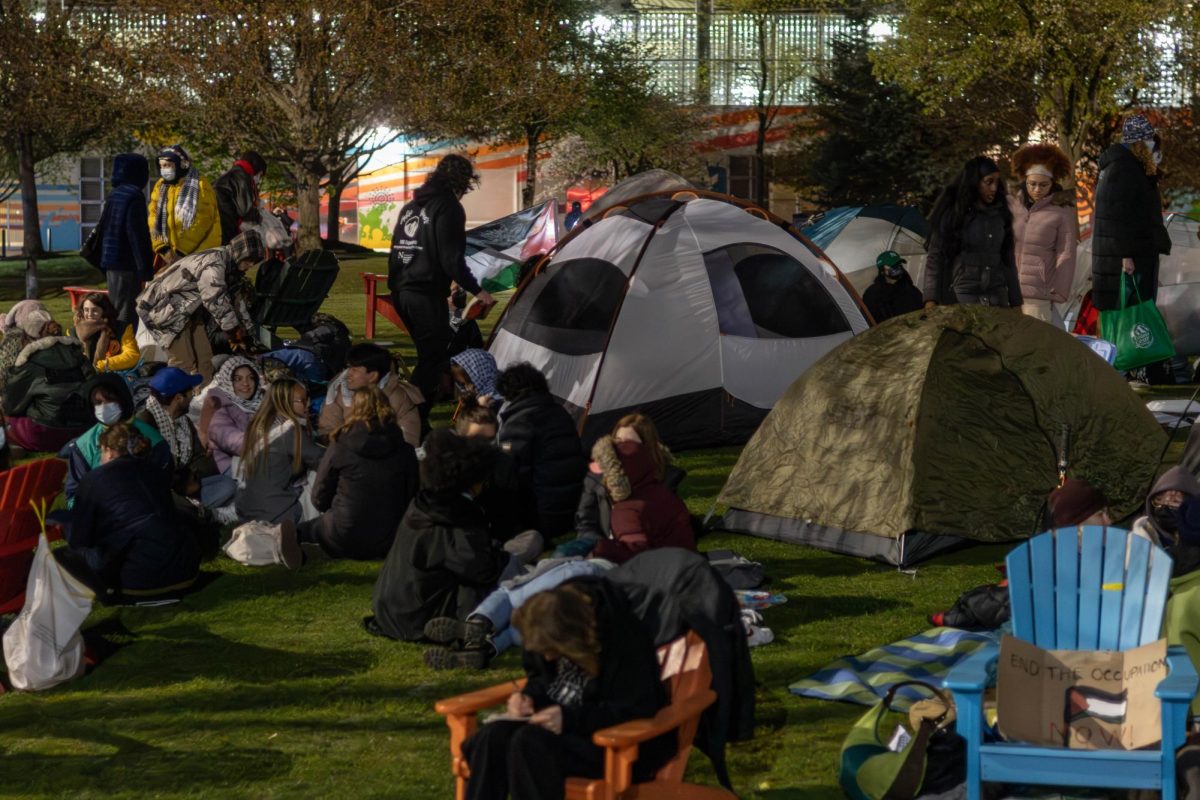Op-ed: The film industry needs to improve its Asian and Pacific Islander representation
Those who identify within the Asian and Pacific Islander, or AAPI, community should be equally represented in the film and television industry. Their voices matter and should be recognized on the big screen rather than only the white actors.
May 12, 2022
As a Filipino Chinese American, I am instilled with the hope that I can still achieve my dreams as a minority in the United States whenever I see an Asian and Pacific Islander, or AAPI, actor on television or in a film. Unfortunately, white actors still play most roles in American-made movies. To raise the likelihood of constructive change, we need to acknowledge how racism affects the American film industry.
Even as the media becomes increasingly ingrained into our lives, opportunities for people of color to see themselves represented in the media are still scarce. While I am joyful seeing Asian Americans and Pacific Islanders celebrate small victories in the American film industry such as Simu Liu’s success, the triumph of “Squid Game,” or Youn Yuh-Jung’s momentous Oscar win, their need to celebrate suggests that America has far from normalized integrating Asian and Pacific Islander characters into its films.
A study performed in May 2021 by the University of Southern California Annenberg Inclusion Initiative observed the percent and number of AAPI characters with lines versus the percent and number of non-AAPI characters with lines in the annual 100 top-grossing films from 2007 to 2019. A character was classified as AAPI if they are Asian, Pacific Islander and/or Native Hawaiian alone or one of the aforementioned races along with other ethnicities or races. Within all the movies, a total of 51,159 speaking characters were examined, 3,034, or 5.9%, of which were AAPI and 48,125, or 94.1%, of which were not AAPI.
The data confirms the unfortunate reality that little progress has been made regarding the expansion of AAPI representation in American films. Even if there is some acknowledgment of the racial imbalance in terms of speaking roles in American films, a lot more work needs to be done to normalize the presence of AAPI characters with lines in popular films. Film companies in the United States need to realize that our world’s beautiful diversity is not reflected in their work. If more companies would have the courage to lead by example and diversify their characters, the film industry would likely take greater strides toward fostering inclusivity.
The lack of prominent AAPI representation in the film industry means that there are few role models for AAPI Americans like myself to look up to. In a depressing survey by Leading Asian Americans to Unite for Change, a non-profit organization striving to help Asian Americans through their work, research and activism, 42% of individuals stated that they could not name a notable Asian American figure. According to the survey, the lack of prominent Asian American figures could be attributed to how approximately 80% of Asian Americans feel that they experience discrimination from other Americans. Concerningly, not many Americans are aware of this discrimination against Asian Americans, as the survey additionally found that 37% of white Americans, 30% of Black Americans, 24% of Hispanic Americans and 13% of Asian Americans were unaware of the rise in hate crimes toward Asian Americans from 2019 to 2020. There are many consequences that Asian Americans face due to discrimination; however, having AAPI figures in the media to look up to could provide the AAPI community with more courage to demand better treatment.
Of course, the film and television industries should take a thoughtful and careful approach to incorporating more Asians and Pacific Islanders. Filipinos like myself and other Southeast Asians are rarely depicted in American media. Instead, most Asian representation in the media focuses on East Asians, which harmfully generalizes and ignores the diversity present in the Asian community.
Native Hawaiian and Pacific Islanders are particularly underrepresented in American media, as the researchers found in another part of their study that of the Asian/Pacific Islander speaking characters they reviewed, most were Asian or Asian American (2,870, or 94.6% of the Asian/Pacific Islander speaking characters). Only 178, or 5.9%, were Native Hawaiian/Pacific Islander. The researchers did note three notable upticks in the percentage of Native Hawaiian/Pacific Islander representation in 2011, 2015 and 2016 stem from these four popular films: “Just Go With It” (2011), “Soul Surfer” (2011), “Aloha” (2015) and “Moana” (2016). These films suggest that the inequality within Asian/Pacific Islander representation is very inconsistent since efforts to shatter that inequality are effective only very temporarily.
Furthermore, because colorism provides Asians and Pacific Islanders with the idea that lighter skin correlates with better treatment from others, European-looking Asians and Pacific Islanders may be preferred over individuals whose physical features are mostly AAPI-resembling.
The researchers also separately state that the ratio of Asian/Pacific Islander males to Asian/Pacific Islander females for speaking roles is 1.7 to 1. Additionally, the American film industry tends to only cast the same few AAPI actors over and over again. For instance, Awkwafina has been cast for many movies such as “Raya and the Last Dragon,” “Crazy Rich Asians” and “Shang-Chi and the Legend of the Ten Rings” despite the number of lesser-known AAPI actors who deserve a chance for exposure. Choosing the same AAPI individuals for AAPI roles still impedes the film industry from being as inclusive as it can be.
Asians and Pacific Islanders also typically play one-dimensional and stereotypical roles such as waiters, sex workers and kung fu characters. These roles reinforce stereotypes about the Asian and Pacific Islander community that prevents the public from understanding that AAPI people have all types of personalities, jobs and dreams, not just the few depicted in media. Asian Americans and Pacific Islanders who do not fit into America’s stereotypes toward them also deserve to share their stories to strengthen bonds among everyone within our melting pot of a country.
Still, AAPI students on-campus who dream of entering the film or TV industries should not be discouraged by the hardships Asian and Pacific Islander actors face today. Communities such as the Asian Student Union, Barkada and many others are filled with friendly individuals who will support those who doubt that they can accomplish their goals amidst society’s discriminatory norms. Artistic organizations such as NUStage, the Northeastern University Symphony Orchestra and Acting Out also have caring environments that will help anyone who seeks to grasp a career in the arts. If there are more Asians and Pacific Islanders who possess the courage to try to enter the film industry, they may be able to inspire other members of their community to follow that path as well. Aspiring film producers should also remember to incorporate diverse characters into their projects to normalize the addition of non-white characters with major roles in American films. With the combination of Asians and Pacific Islanders persistently pursuing their passion for acting and increasing numbers of film producers prioritizing Asian/Pacific Islander representation in the media, equality in the film and television industries could be achieved.
Jethro Ronald Lee is a first-year data science and psychology combined major with a minor in music. He can be reached at [email protected].


















